Invited Speakers of ICCSN2025

Prof. Wenxin Liu, Aerospace Information Innovation Institute of the Chinese Academy of Sciences, China
Biography: Wenxin Liu (SM’2015), a researcher of the Aerospace Information Innovation Institute of the Chinese Academy of Sciences, a professor and doctoral supervisor of the University of the Chinese Academy of Sciences, IET Fellow, an associate editor of IEEE Access, a senior member of IEEE, and a chief scientist of the national key research and development program, has long been engaged in the research of millimeter wave terahertz vacuum electron radiation sources. Hosted more than 30 projects including the National Key Research and Development Program, the National Natural Science Foundation of China, the Chinese Academy of Sciences' important direction, and the 863 Program. Achieved the first prize and 3 second prizes for military scientific and technological progress, 1 first prize for scientific and technological invention in China's non-ferrous metal industry, 1 second prize for scientific and technological progress of the Chinese Society of Electronics, and the Outstanding Contribution Award at the 5th International Conference on Materials Microanalysis in 2019. In the past 5 years in Light: 31 SCI papers have been published in journals such as Science&Applications, IEEE Tran. MTT, IEEE EDL, and the International Vacuum Electronics Conference (IVEC), with 70 papers included in EI. He has cited 348 times and authored 1 monograph. He has given 30 invited presentations at important academic conferences such as IRMMW THz, IVEC, and PIERS; Authorized 9 national invention patents and 5 software copyrights; Served as chairman of international and domestic conferences and TPC committee member 26 times; Train 30 graduate students, including 12 doctoral students and 18 master's students (including joint training). Expert in the evaluation of major scientific instruments by the National Natural Science Foundation of China, expert in the evaluation of key research and development plans by the Ministry of Science and Technology, expert in the evaluation of graduate theses by the Ministry of Education, and editorial board member of the Journal of Terahertz Science and Electronic Information. Twice awarded the title of "Excellent Science and Technology Worker" by the Chinese Electronics Society and selected for the "Elite Talents" program by the Institute of Electronics, Chinese Academy of Sciences.

Prof. Feng Yin, The Chinese University of Hong Kong, Shenzhen, China
Biography: Feng Yin received his B.Sc. degree from Shanghai Jiao Tong University, China, and his M.Sc. and Ph.D. degrees from Technische Universitaet Darmstadt, Germany. From 2014 to 2016, he was a postdoc researcher with Ericsson Research, Linkoping, Sweden. Since 2016, he has been with The Chinese University of Hong Kong, Shenzhen and is currently an assistant professor of the School of Science and Engineering. His research interests include statistical signal processing, Bayesian learning and optimization, and sensory data fusion. He has published more than 40 top-tier journal papers, 50 conferences, and 20 patents/standards. He was a recipient of the Chinese Government Award for Outstanding Self-Financed Students Abroad in 2013 and the Marie Curie Young Fellowship from the European Union in 2014. He was the finalist for the IEEE CAMSAP best paper award in 2013 and received the best paper award of ICSINC conference in 2022. He has served as Associate Editor for the Elsevier Signal Processing Journal and currently serving as the Associate Editor for the IEEE Transactions on Signal Processing. He is an IEEE senior member and a core member of the IEEE Machine Learning and Signal Processing (MLSP) technical committee and the IEEE SPS scholarship committee.

Prof. Ning Wang, Zhengzhou University, China
Biography: Ning Wang received the B.E. degree in communication engineering from Tianjin University, Tianjin, China, in 2004, the M.A.Sc. degree in electrical engineering from the University of British Columbia, Kelowna, BC, Canada, in 2010, and the Ph.D. degree in electrical engineering from the University of Victoria, Victoria, BC, Canada, in 2013. From 2004 to 2008, he was with the China Information Technology Design and Consulting Institute as a Mobile Communication System Engineer, specializing in telecommunication network traffic analysis and radio network planning and optimization. From 2013 to 2015, he was a Postdoctoral Research Fellow with the Department of Electrical and Computer Engineering and the Institute for Computing, Information and Cognitive Systems, the University of British Columbia. Since 2015, he has been with the School of Electrical and Information Engineering, Zhengzhou University, Zhengzhou, China, where he is currently a full Professor and Chair of the Department of Communication Engineering. He also holds adjunct appointments with the Department of Electrical and Computer Engineering, University of Victoria, Victoria, BC, Canada, and the State Key Laboratory of Millimeter Waves, Southeast University, Nanjing, China. In 2017, he was a Visiting Scholar in the Department of Electronic Engineering, Tsinghua University, Beijing, China. His research interests include resource allocation and security designs of cellular networks, channel modeling for wireless communications, statistical signal processing, and cooperative wireless communications. He serves as the Deputy Secretary-General of the Intelligent Transportation Information Engineering Society of the Chinese Institute of Electronics. He has also served on the technical program committees of international conferences including the IEEE GLOBECOM, IEEE ICC, IEEE WCNC, ICICC and CyberC.

Prof. Qinghua Luo, Harbin Institute of Technology (Weihai), China
Biography: Luo Qinghua is a
Professor and Doctoral Supervisor at Harbin Institute of Technology
(Weihai). He serves as the Deputy Director of the Key Laboratory of
Cross-Domain Collaborative and Integrated Support for Marine Unmanned
Systems (Ministry of Industry and Information Technology) and Director of
the Weihai Key Laboratory of Marine Intelligent Unmanned Equipment
Technology. His research focuses on wireless positioning and uncertainty
analysis, marine stereoscopic observation technology, intelligent unmanned
systems, and collaborative positioning and navigation.
He has led over 20 research projects, including grants from the National
Natural Science Foundation of China (General Program), Shandong Natural
Science Foundation (General Program), Shandong Major Science and
Technology Innovation Project, China Postdoctoral Science Foundation, Open
Fund of State Key Laboratories, and industry collaborations. He has
published more than 30 SCI/EI-indexed papers in journals such as IEEE
Transactions on Industrial Informatics, Information Sciences, IEEE Sensors
Journal, Sensors, Neural Computing and Applications, Measurement, Acta
Automatica Sinica, and Journal of Software. Additionally, he holds 20
authorized national invention patents and has filed 36 patent
applications.
Prof. Luo serves as a reviewer for several prestigious journals, including
IEEE Transactions on Industrial Informatics, IEEE Transactions on
Instrumentation & Measurement, Acta Electronica Sinica, and Acta
Automatica Sinica. He is a member of IEEE, ACM, CCF, the Chinese Institute
of Electronics, the Chinese Association of Automation, and the China
Academic Degrees & Graduate Education Association.

Prof. Dr. Mohd Zulfaezal Che Azemin, International Islamic University Malaysia, Malaysia
Speech Title: High-Resolution Retinal
Image Analysis: AI-Powered Diagnostics from Pixel to Prediction in a
Cloud-Based Framework
Abstract: Retinal image analysis is a vital tool for the early
detection of vision-threatening and systemic conditions such as diabetic
retinopathy, glaucoma, and age-related macular degeneration. This talk
introduces a high-resolution, cloud-based diagnostic framework that
leverages artificial intelligence to enhance the precision and
accessibility of retinal disease screening. Using 2048×2048 pixel fundus
images from the FIVES dataset, the system applies fractal dimension (FD)
analysis to quantify retinal vascular complexity, enabling robust
differentiation between healthy and pathological states.
Central to the framework is a deep learning segmentation model (IS-Net)
trained on high-resolution images, which achieves high specificity and F1
scores in identifying fine vascular structures. The system further
integrates optic cup-to-disk ratio (CDR) analysis and diabetic retinopathy
prediction using convolutional neural networks, creating a multifaceted
assessment pipeline suitable for both clinical use and large-scale
screening initiatives.
The entire solution is deployed via a cloud-based architecture, supporting
real-time processing, remote access, and integration into
teleophthalmology workflows. Usability testing among clinical users
yielded high satisfaction scores, reinforcing the system’s practical
readiness. These findings illustrate the critical role of high-resolution
imaging and scalable AI deployment in building next-generation digital
health tools aligned with emerging connected healthcare ecosystems.
Biography: Prof. Dr. Mohd Zulfaezal
Che Azemin aspires to enhance healthcare through innovative research in
medical image processing. With a Master's degree from Monash University
and a Ph.D. from RMIT University, his expertise in analyzing retina images
for stroke risk prediction has positioned him as a pioneer in his field.
At the Kulliyyah of Allied Health Sciences, he merges theoretical
knowledge with practical application in his teachings on optics, health
informatics, digital image processing, and AI in Medical Imaging,
fostering an environment of innovation among his students.
His contributions have been recognized with awards for research excellence
and innovation, reflecting his commitment to making a tangible difference
in the field. Dr. Zul's engagement with industry, leading to significant
initiatives such as a Prototype Research Grant Scheme, and Industry
Matching Programme further demonstrates the practical impact of his work.
Dr. Zul's global collaborations with renowned experts in Japan, Australia,
China, Singapore, and Palestine have greatly enhanced his research,
emphasizing the international significance of his contributions. Adding to
his career experience, Dr. Zul has authored and co-authored articles in
reputable journals, including the IEEE Transaction on Medical Imaging,
Neurology, Neurobiology of Aging, Investigative Ophthalmology & Visual
Science, Experimental Eye Research, and Fractal and Fractional. These
publications showcase his wide-ranging impact on the fields of medical
imaging, neurology, and ophthalmology.
Through persistence, collaboration, and a dedication to global scientific
exchange, Dr. Zul exemplifies the qualities of a pioneering researcher in
healthcare technology. His work not only advances the scientific community
but also offers hope for better health outcomes worldwide.
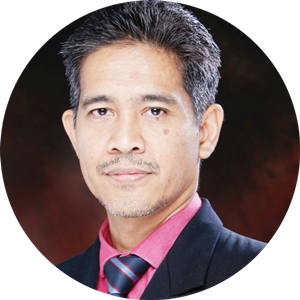
Prof. Mohd Nazri Bin Ismai, National Defence University of Malaysia
Biography: Prof. Dr. Mohd Nazri became
Lecturer at National Defence University of Malaysia. Prof. Dr. Mohd Nazri
Ismail had a deep involvement in computer network research and was awarded
the prestigious “Educator Award 2009 – R&D/Education category” by MARA
(Malaysia Agency). He has supervised Ph.D. and Master Students and
teaching at undergraduate and post graduate level. Assoc. Prof. Dr. Mohd
Nazri Ismail has published more than 100 papers in national and
international journals (indexed ISI, SCOPUS, IET) and IEEE conferences.
He has attended many international conferences throughout the world and
has chaired many technical sessions. He has appointed as Technical Program
Committee and organized more than 60 national and international
conferences. He has appointed as Editorial Board member more than 90
international journals and 40 international reviewer panels
(journal/proceeding). Awards and laurels won by Assoc. Prof. Dr. Mohd
Nazri Ismail run into volumes and he has received 28 awards in
R&D/Education. Assoc. Prof. Dr. Mohd Nazri Ismail is an International
Association of Engineers (IAENG), IEEE Cloud Computing Community, Society
of Digital Information and Wireless Communications (SDIWC), International
Association of Engineers and Scientists (IAEST), Universal Association of
Computer & Electronics Engineers (UACEE).

Prof. Paulo Batista, University of Évora, Portugal
Speech Title: Architectural Records:
Dealing With Complexity
Abstract: Personal archives of architects pose countless problems
and challenges to the information services where they are located or to
those preparing to receive them: among others, large volume, easily
reaching tens of thousands of documents, fragility of the supports and
numerous formats, many of which are large dimension, with profound
consequences in terms of its organization, classification, description,
conservation, preservation, access, and dissemination. Involving this
dynamic, its treatment implies the allocation of, at least, one
collaborator for a considerable period, in addition to the fact that its
target audience is residual, which normally seeks this documentation as
part of research project, especially master's dissertations and doctoral
theses. Considering this reality, what strategies should be implemented to
face these problems and challenges, transforming them into opportunities?
Biography: Paulo Batista is PhD Researcher at CIDEHUS.UÉ-Interdisciplinary Center for History, Cultures and Societies of the University of Évora, Portugal, where is the coordinator of the research group 2: Heritage and Literacies. Currently works as a higher technician in the Municipal Archives of Lisbon, and professor at the Autonomous University of Lisbon, where is coordinator and professor of the Postgraduate in Promotion and Cultural and Educational Dynamization of Archives and Libraries, and the Postgraduate in Architectural Archives.
He has lectured in the MS program in Information Science and Documentation at Universidade NOVA de Lisboa and has held senior technician positions at the Portuguese Institute of Cultural Heritage, the Portuguese Institute of Architectural Heritage, and the Torre do Tombo Archives. He has also worked as researcher at the Center for the Study of History and Ancient Cartography of the Institute of Tropical Scientific Research.
Paulo Batista holds a Ph.D. in Documentation (University of Alcalá, Madrid-UAH), an MS in Information Science and Documentation - Archival Studies (UNL), and an MA in Documentation (UAH). As part of his doctorate, he also received a Diploma of Advanced Studies in Bibliography and Documentation Retrospective in Humanities (UAH), and he also holds a postgraduate degree in Information Society Law (University of Lisbon) and Information and Documentation Science - Librarianship and Archival Studies (UNL), and a specialization in Good Practices in Patrimonial Management (UNL) and Information Science and Documentation - Archival Studies (UNL). He holds an undergraduate degree in History (University of Lisbon).
Paulo Batista is the author of several books and about 90 papers published in international journals and conference proceedings. He was also keynote speaker and invited speaker at various international conferences (Portugal, Argentina, Belgium, Brazil, China, Ecuador, Egypt, England, Fiji, France, India, South Africa, Thailand, Türkiye and South Korea).
More information: https://www.cienciavitae.pt//0618-CE7B-7145

Assoc. Prof. Na Li, Beijing University of Posts and Telecommunications, China
Biography: Na Li is currently an
associate professor of Beijing University of Posts and Telecommunications
(BUPT). She serves as the deputy director of the mobile network security
institute of the national engineering research center for mobile network
technologies since 2021. She received the B.S. and M.S. degrees from the
Ocean University of China, Qingdao, China, in 2009 and 2012, respectively,
and the Ph.D. degree from the BUPT, Beijing, China, in 2015.
Her research interests are in the area of 5G-A/6G wireless communications
and networks, with current emphasis on wireless security and privacy in
integrated sensing and communications (ISAC), RIS assisted wireless
networking, and resource allocation in integrated network of air, space
and ground wireless networks. She has published 100 papers, patents, books
and chapters of books, with one ESI highly cited paper. She received two
science and technology awards issued by Chinese Institute of Electronics
and Chinese Institute of Communications, and four best paper awards of
international conferences.

Assoc. Prof. Shiying Han, Nankai University, China
Speech Title: Boosting Symbiotic
Radio Networks Using Reconfigurable Intelligent Surface
Abstract: Enabled by ambient backscatter communication
(AmBC) technique, symbiotic radio network (SRN) can provide
internet-of-things (IoT) services with ultra-low power and spectrum
consumption. Compared with long range radio (LoRa) and narrow-band IoT
(NB-IoT) which respectively operate in unlicensed ISM band and LTE band,
the backscatter transmission suffers from double fading and path loss
which severely restrict its service range. In this talk, we will present
our recent works that aim to release this bottleneck by employing the
newly emerging reconfigurable intelligent surface (RIS) techniques,
including the traditional single-layer RIS, simultaneously transmission
and reflection RIS (STAR-RIS), and reconfigurable holographic surface
(RHS). Related wireless resource and beamforming optimization problems and
solving algorithms will be elaborated. Finally, promising tendency of SRN
application enabled by RIS will be discussed.
Biography: Dr Shiying Han (Member, IEEE) received the
B.Eng. degree in communication engineering from Tianjin University,
Tianjin, China, in 2008, the M.Eng. degree in communication and
information system from the Beijing University of Posts and
Telecommunications, Beijing, China, in 2011, and the Ph.D. degree in
electrical and electronic engineering from Nanyang Technological
University, Singapore, in 2015. She was a Research Fellow with
NTUSinBerBEST, Singapore. She is an Associate Professor and serve as the
Assistant of Dean in the College of Electronic Information and Optics
Engineering, Nankai University. Her current research interests focus on
the intelligent spectrum sharing in heterogeneous networks, symbiotic
radio networks, ultra-lower-power wireless transmission.

Assoc. Prof. Yang Yang, Shandong University, China
Biography: Yang Yang is an Associate Professor and Doctoral Supervisor in the School of Information Science and Engineering at Shandong University. Holding a Ph.D. from Shandong University (2009) and postdoctoral expertise in biomedical engineering (Imperial College London), he specializes in signal processing, AI-driven pattern recognition, and cross-disciplinary applications such as big data analytics, embedded systems, and real-time signal detection. As the principal investigator of several key projects, he leads the National Key R&D Program initiative "Fast Signal Detection and Intelligent Recognition Algorithm Development" (2021–present). His research also addresses societal challenges through projects such as Intelligent Decision-Making Technology for Parole Supervision Based on Social State Monitoring Big Data (2018–2021) and Psychological Behavior Prediction and Risk Early-Warning Technologies (2021–2023). With over 40 publications in journals and conferences, 20+ Chinese invention patents, and 2 U.S. patents.
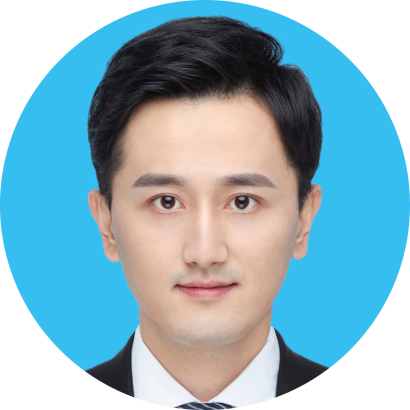
Assoc. Prof. Xiaoxuan Wang, Beijing Jiaotong University, China
Speech Title: Enhancing Task
Offloading in IoV with a Two-Stage Algorithm under Information Asymmetry
Abstract: In the Internet of Vehicles (IoV), efficient
task offloading is critical for overcoming vehicle resource constraints
and meeting the demands of computationally intensive services. However,
information asymmetry between vehicles and infrastructure poses
significant challenges to optimal task offloading. We introduce a novel
two-stage offloading strategy that combines Proximal Policy Optimization
(PPO) and Soft Actor-Critic (SAC) algorithms to address these challenges.
The first stage employs PPO to decide whether tasks should be offloaded to
Roadside Units (RSUs) based on task urgency and system status, while the
second stage uses SAC to optimize partial offloading decisions, including
task distribution among service vehicles and incentive mechanisms.
Simulation results demonstrate that this approach effectively reduces task
urgency in the buffer queue and enhances overall system efficiency and
reliability compared to traditional methods. The proposed strategy
provides a robust solution for task offloading in IoV scenarios
characterized by information asymmetry and vehicle selfishness.
Biography: Dr. Xiaoxuan Wang received his Ph.D. degree in
traffic control and information engineering from Beijing Jiaotong
University, Beijing, China, in 2020. From 2017 to 2018, he was a Visiting
Scholar with Dr. Lingjia Liu in Wireless@VT, Virginia Tech, VA, USA. He is
currently an Associate Professor at the School of Electronic and
Information Engineering, Beijing Jiaotong University, and the Associate
Director at the Cyber-Physical Systems & Industrial Software Lab. His main
research interests are in dependability and security for wireless
communications and communication networks in smart city, intelligent
transportation and railway transportation. He has published more than 30
research papers in top international conferences and journals, such as
IEEE T-ITS, T-VT, IoT-J, IET-ITS, ICC, WCNC, Globecom, VTC, etc. He has
been the recipients of the 2018 International Conference on Intelligent
Rail Transportation Best Paper Award.

Assoc. Prof. Syed Mushhad Mustuzhar Gilani, University of Agriculture, Pakistan
Biography: Dr. Syed Mushhad Mustuzhar
Gilani is an Associate Professor in the Department of Computer Science at
the University of Agriculture, Faisalabad, Pakistan. He also serves as an
Associate Senior Tutor, Postgraduate Research Advisor, and Convener of
multiple institutional committees.
Previously, Dr. Gilani was an Assistant Professor in Computer Science and
a Postgraduate Research Advisor at PMAS-Arid Agriculture University,
Rawalpindi, where he contributed significantly to academic excellence from
2012 to 2022.
Dr. Gilani earned his Ph.D. from the School of Computer Science, Chongqing
University of Posts and Telecommunications, China. With a prolific
academic and research career, he has authored over 60 publications in
esteemed international journals and conferences. His expertise extends to
successfully supervising postgraduate research projects and actively
participating in the academic community as a session chair and invited
speaker for prestigious conferences and a reviewer for high-impact
journals.
Dr. Gilani's achievements include receiving the "Excellent Speaker Award"
at the TEDx Youth Festival 2017 hosted by Chongqing University of Posts
and Telecommunications, China.
His research interests encompass cutting-edge areas such as Future
Internet Architectures, Software-Defined Wireless Networks, the Internet
of Things (IoT), and Smart Environments.

Assoc. Prof. Bitao Pan, Beijing University of Posts and Telecommunications, China
Biography: Dr. Bitao Pan is currently an associate professor at Beijing University of Posts and Telecommunications. His research interests include design and modelling of optical networks, software defined automatic optical networking, FPGA based fast optical switching, and optical interconnects in distributed machine learning. Dr. Bitao Pan obtained his PhD degree from ECO group of Eindhoven University of Technology, The Netherlands, under the supervision of Dr. Nicola Calabretta and Prof. Ton Koonen. During his PhD, Bitao Pan has attended in 3 European H2020 research projects, the Metro-Haul, PASSION, and Qameleon. He has (co)authored more than 30 research papers, which include IEEE/Optica JOCN, IEEE/Optica JLT, IEEE TCOM, et.al. His is also serving as reviewers to IEEE/Optica JOCN, IEEE JSAC, Nature LAS, et.al.

Assoc. Prof. Yingyang Chen, Jinan University, China
Speech Title: URLLC Design for
Autonomous Driving: A Rate-Splitting Finite Blocklength Approach
Abstract: Autonomous driving demands ultra-reliable and
low-latency communication (URLLC) to ensure safe and efficient operation
in highly dynamic environments. This talk introduces a novel communication
framework that combines rate-splitting multiple access (RSMA) with finite
blocklength (FBL) design to meet these demanding requirements. We develop
closed-form solutions and jointly optimize power allocation and rate
splitting, considering real-world factors and changing channel conditions.
This approach improves reliability and fairness, showing strong robustness
in high-mobility scenarios, and effectively supports the critical
communication needs of autonomous driving systems.
Biography: Dr. Chen is an Associate Professor at Jinan
University. She received her B.Eng. from Yingcai Honors College,
University of Electronic Science and Technology of China, and her Ph.D.
from Peking University. She was a visiting student at the University of
Southampton in 2018. Her research interests include next-generation
multiple access, cross-layer resource allocation, and aerial intelligent
networks. Dr. Chen has received the Fund for Distinguished Young Scholars
of Guangdong Province and the First Prize of the Science and Technology
Progress Award from the China Work Safety Association. She is an Editor
for IEEE Communications Letters and a Senior Member of IEEE.

Assoc. Prof. Jiazhi Ma, National University of Defense Technology, China
Speech Title: Multi-domain Approach
against Complex Active Jamming
Abstract: Active jamming countermeasures have emerged as a
critical challenge in the radar field. Effective anti-jamming approaches
serve as the foundational prerequisite for radar detection and perception
in the battlefield complex electromagnetic environment. This presentation
first outlines the complex active jamming threats for radars, then
presents several novel multi-domain anti-active jamming methods. By
implementing flexible processing across the multi-domain of time frequency
space and polarization, these anti-jamming methods based on waveform,
beamforming, and signal features achieve good performance in mitigating
some new active jamming patterns.
Biography: Ma Jiazhi is currently an associate professor and master's supervisor at the College of Electronic Science, National University of Defense Technology. He received the M.S. degree in 2012 and Ph.D. degree in 2017. His research interests include radar signal processing and radar polarization anti-interference.

Senior Engineer Dr. Dongdong Wang, 54th Research Institute of China Electronics Technology Group Corporation, China
Biography: Dongdong Wang received the Ph.D. degree in Information and Communication Engineering from the Beijing University of Posts and Telecommunications (BUPT), in 2018. He currently holds the professional title of Senior Engineer, serves as a Master's supervisor at China Electronics Technology Group Corporation, and has been appointed as an Institute-level Expert in the field of LEO satellite transmission technology at the 54th Research Institute of China Electronics Technology Group Corporation. He has authored or coauthored over 30 technical articles in international journals and conferences. His research interests include information theory and channel coding, 5G based LEO satellite transmission technology.

Lecturer Kaitao Meng, University of Manchester, UK
Speech Title: Integrated Sensing
and Communication Networks: Design, Analysis, and Optimization
Abstract: Network-level Integrated Sensing and Communication
(ISAC) unifies target sensing and data transmission across multiple base
stations, treating them as intertwined services over the same hardware,
spectrum, and backhaul. By coordinating beamforming, waveform design, and
resource allocation at the network scale, it expands coverage and spatial
resolution, introduces extra degrees of freedom for balancing sensing
accuracy against throughput, and leverages shared spectrum and hardware to
boost spectral and energy efficiency. This webinar will provide an
overview of network-level ISAC and explore multi-layer collaboration
schemes, covering interference suppression, cooperative signal processing,
and network-wide resource allocation, highlighting both the performance
gains achieved and the costs incurred. Centralized or distributed
coordination further mitigates interference and enhances robustness, while
cooperative architectures ensure scalability and resilience under dynamic
topologies. As a fully coordinated service, network-level ISAC unlocks
multifunctional 6G capabilities, high-precision localization, real-time
environment mapping, and ultra-reliable communications, across smart
cities, industrial sites, and beyond.
Biography: Kaitao Meng received
the B.E. and the Ph.D. degrees from the School of Electronic Information,
Wuhan University, Wuhan, China, in 2016 and 2021, respectively. From 2021
to 2023, he was a Postdoctoral Researcher in the State Key Laboratory of
Internet of Things for Smart City, University of Macau, Macau, China. From
2023 to 2025, he worked as a Marie Curie Fellow with the Department of
Electronic and Electrical Engineering, University College London, U.K.
Starting in August 2025, he will join the Department of Electrical and
Electronic Engineering at the University of Manchester as a Lecturer
(Assistant Professor). His current research interests mainly include
integrated sensing and communication, cooperative sensing, network-level
ISAC, and intelligent surfaces.
He was the recipient of the 2022 EU Marie Curie Postdoctoral Fellowship.
He is a Guest Editor for IEEE TCCN and Journal of radars, Associate Editor
for IEEE IoT. He has also chaired several IEEE conference tracks and
workshops, including Track Co-Chair of IEEE VTC-Spring 2025 and Co-Chair
roles at IEEE ICC Workshop 2025, IEEE GlobeCom Workshop 2024-2025, WiOpt
Workshop 2025 on Integrated Sensing and Communications.

Dr. Kai Li, CISTER Research Unit at ISEP/IPP, Portugal
Biography: Kai Li is a Visiting Research Scholar with the School of Electrical Engineering and Computer Science, TU Berlin, Germany, and a Senior Research Scientist with the CISTER Research Centre, Porto, Portugal. He is also a CMU-Portugal Research Fellow, jointly supported by Carnegie Mellon University (CMU), Pittsburgh, PA, USA, and the Foundation for Science and Technology (FCT), Lisbon, Portugal. From 2023 to 2024, he was a Visiting Research Scientist with the Division of Electrical Engineering, Department of Engineering, University of Cambridge, UK. In 2022, he was a Visiting Research Scholar with the CyLab Security and Privacy Institute, CMU. Prior to this, he was a Post-Doctoral Research Fellow with the SUTD-MIT International Design Centre, Singapore University of Technology and Design, Singapore, from 2014 to 2016. He has also held positions as a Visiting Research Assistant with the ICT Centre, CSIRO, Brisbane, QLD, Australia, from 2012 to 2013, and a full-time Research Assistant with the Mobile Technologies Centre, The Chinese University of Hong Kong, Hong Kong, from 2010 to 2011. He received the Ph.D. degree in computer science from The University of New South Wales, Sydney, NSW, Australia, in 2014, the M.S. degree from The Hong Kong University of Science and Technology, Hong Kong, in 2010, and the B.E. degree from Shandong University, China, in 2009. He has been an Associate Editor of journals, such as Internet of Things (Elsevier) since 2024, Nature Computer Science (Springer) since 2023, Computer Communications (Elsevier) and Ad Hoc Networks (Elsevier) since 2021, and IEEE ACCESS from 2018 to 2024.

Dr. Zichao Li, Canoakbit Alliance / University of Waterloo, Canada
Speech Title: Lightweight Adversarial
Training for Secure IoT Communication Applications
Abstract: The rapid proliferation of IoT devices in communication
networks has introduced significant security challenges, particularly from
evolving malware designed to exploit vulnerabilities in network protocols
and edge software. Traditional malware detection methods struggle to adapt
to these dynamic threats, especially in resource-constrained IoT
environments where computational efficiency is critical. We present
Lightweight Adversarial Training for Secure IoT Communication Software
(LATICS), a robust deep learning framework designed to detect malware in
IoT network traffic while resisting adversarial evasion attacks. By
integrating MobileNet-based feature extraction, attention mechanisms, and
Fast Gradient Sign Method (FGSM) adversarial training, LATICS achieves
high accuracy in identifying malicious traffic patterns with minimal
computational overhead.
Our approach specifically targets communication software vulnerabilities,
including protocol impersonation (e.g., malicious MQTT/CoAP packets) and
adversarial perturbations designed to bypass traditional intrusion
detection systems. We evaluate LATICS on the CIC-IoT-2023 and TON-IoT
datasets, which capture diverse network-level attacks (DDoS, ransomware,
and spoofing). Experimental results demonstrate that LATICS achieves 99.2%
detection accuracy—outperforming both signature-based tools (Snort) and
ML-based NIDS (Kitsune)—while maintaining a 10× reduction in inference
latency compared to cloud-centric solutions. The adversarial training
pipeline enhances robustness, reducing the success rate of evasion attacks
by 74% compared to non-hardened models.
A key innovation lies in LATICS’s edge-compatible design, enabling
deployment on low-power devices (e.g., Raspberry Pi) without compromising
detection fidelity. We further validate its practicality through
integration with SDN controllers, showcasing real-time malware blocking in
software-defined IoT networks. This work bridges the gap between
adversarial machine learning and communication software security, offering
a deployable solution for 5G/6G edge networks. Our findings highlight the
critical role of lightweight, adversarially robust models in safeguarding
the future of IoT communication ecosystems.
Biography: Dr. Zichao Li is currently a researcher at University of Waterloo. He holds PhD in management science. He is currently conducting research on machine learning optimization algorithms. I leverage on traditional optimization techniques used in transportation model to improve deep learning's knowledge graph structures. The main application area of his research is in financial market fraud and sentiment detection. His research interests are Pattern recognition for medical engineering; Big data and deep learning; Graph Convolutional Network; Neural Networks; Optimization Algorithms for big data; Reinforced Learning and Adversarial Learning; Self Supervised and Unsupervised Learning; Bayesian Optimization; RNN, LSTM, GNN; Knowlege-Graph Embedding; Explainable AI; Distributed Statistical Model. He also work as chief scientist at a fintech firm.
Invited Speakers of ICCSN2024
 |
 |
 |
Prof. Pascal Lorenz, |
Prof. Abdellatif KOBBANE, Mohammed V University in Rabat, Morocco |
Prof. Gang Wang, Ningbo University, China (IEEE Senior Member) |
 |
 |
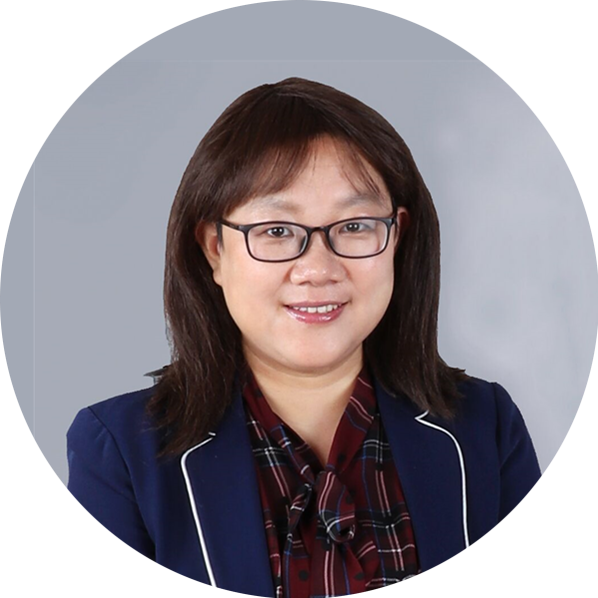 |
| Prof. Yuanguo Bi, Northeastern University, China |
Assoc. Prof. Hongyan Fu, Tsinghua University, China |
Assoc. Prof. Liwei Yang, China Agricultural University, China |
 |
 |
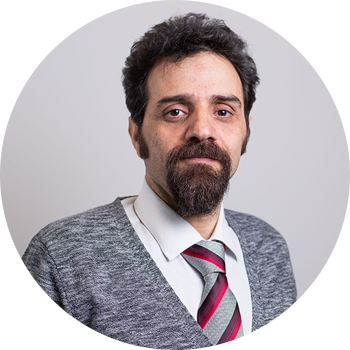 |
| Assoc. Prof. Tian Pan, Beijing University of Posts and
Telecommunications, China |
Assoc. Prof. Xiaoxuan Wang, Beijing
Jiaotong University, China |
Assoc. Prof. Hoshang Kolivand, Liverpool John Moores University, UK (IEEE Senior Member) |
 |
 |
 |
| Assoc. Prof. Chao Fang, Beijing
University of Technology, China (IEEE Senior
Member) |
Assoc. Prof. Dawei Wang, Sun Yat-sen
University, China |
Assoc. Prof. Mengwei Xu, Beijing University of Posts and Telecommunications, China |
 |
 |
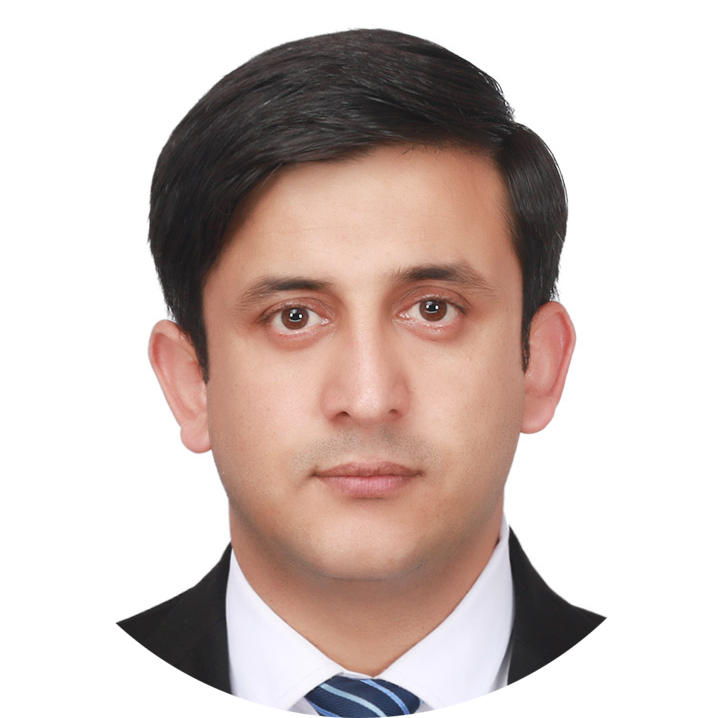 |
Senior Engineer Dr. Dongdong Wang, Network Communication Research Institute of China Electronics Technology Group Corporation, China |
Dr. Yanan Liang, Beijing Jiaotong University, China |
Dr. Amjad Ali Amjad, Zhejiang University, China |